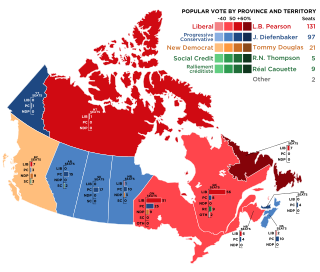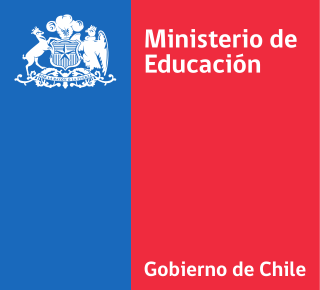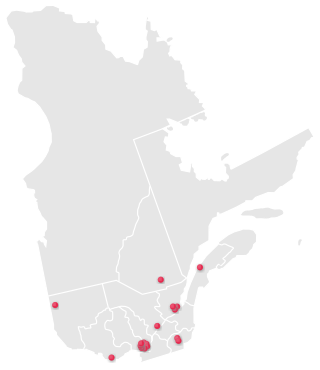Education in Quebec is governed by the Ministry of Education and Higher Education. It was administered at the local level by publicly elected French and English school boards, changed in 2020 to school service centres. Teachers are represented by province-wide unions that negotiate province-wide working conditions with local boards and the provincial government of Quebec.
Tuition payments, usually known as tuition in American English and as tuition fees in Commonwealth English, are fees charged by education institutions for instruction or other services. Besides public spending, private spending via tuition payments are the largest revenue sources for education institutions in some countries. In most developed countries, especially countries in Scandinavia and Continental Europe, there are no or only nominal tuition fees for all forms of education, including university and other higher education.
Tuition fees were first introduced across the entire United Kingdom in September 1998 under the Labour government of Tony Blair to help fund tuition for undergraduate and postgraduate certificate students at universities; students were required to pay up to £1,000 a year for tuition. However, only those who reach a certain salary threshold (£21,000) pay this fee through general taxation. In practice, higher education (HE) remains free at the point of entry in England for a high minority of students.

The Canadian Federation of Students (CFS) is a student organization in Canada, representing over 530,000 students from across Canada. Formed in 1981, the stated goal of the Federation is to represent the collective voice of Canadian students and work at the federal level for high quality, accessible post-secondary education. The CFS has its roots in Canada's long tradition of having national student organizations, such as formerly the National Union of Students (Canada), the Canadian Union of Students, the National Federation of Canadian University Students, the Canadian Student Assembly, and the Student Christian Movement of Canada (SCM).

The 1965 Canadian federal election was held on November 8, 1965 to elect members of the House of Commons of Canada of the 27th Parliament of Canada. The Liberal Party of Prime Minister Lester B. Pearson was re-elected with a larger number of seats in the House. Although the Liberals lost a small share of the popular vote, they were able to win more seats, falling just short of a majority.

The Ontario Student Assistance Program (OSAP) (French: Régime d'aide financière aux étudiantes et étudiants de l'Ontario ) is a provincial financial aid program that offers grants and loans to help Ontario students pay for their post-secondary education. OSAP determines the amount of money that a student is eligible to receive by considering factors such as tuition, course load, and the financial resources of the student. More than 380,000 students – more than half of all full-time students –received student financial aid in 2014-15.

A public university or public college is a university or college that is owned by the state or receives significant funding from a government. Whether a national university is considered public varies from one country to another, largely depending on the specific education landscape. In contrast a private university is usually owned and operated by a private corporation. Both types are often regulated, but to varying degrees, by the government.

Education in Chile is divided in preschool, primary school, secondary school, and technical or higher education (university).The levels of education in Chile are:
Tuition freeze is a government policy restricting the ability of administrators of post-secondary educational facilities to increase tuition fees for students. Although governments have various reasons for implementing such a policy, the main reason cited is improving accessibility for working- and middle-class students. A tuition fee freeze is a common political goal of the Canadian student movement, especially the Canadian Federation of Students.

Higher education in Quebec differs from the education system of other provinces in Canada. Instead of entering university or college directly from high school, students in Quebec leave secondary school after Grade 11, and enter post-secondary studies at the college level, as a prerequisite to university. Although both public colleges (CEGEPs) and private colleges exist, both are colloquially termed CEGEPs. This level of post-secondary education allows students to choose either a vocational path or a more academic path.

Newfoundland and Labrador has had the same growing pains as other provinces in developing its own form of education and now boasts a very strong, although relatively small, system. The direction of Newfoundland and Labrador's policy has evolved rapidly since the late 1990s, with increased funding, participation rates, accessibility and transferability. Many of the directives the government has been acting upon in the past 10 years have been a result of recommendations that stemmed from a 2005 white paper: Foundation for Success: White Paper on Public Post-Secondary Education. It set the course for furthering the strategic directives of the provincial post-secondary education sector. Some of its recommendations aimed to:

Higher education in Nova Scotia refers to education provided by higher education institutions. In Canada, education is the responsibility of the provinces and there is no Canadian federal ministry governing education. Nova Scotia has a population of less than one million people, but is home to ten public universities and the Nova Scotia Community College, which offers programs at 13 locations.
The National Union of Students, Union nationale des étudiants (NUS/UNE) was a national university and college student organization in Canada from November 1972 to May 1981. The Union represented over 350,000 students in post secondary education. Donald Thompson, Sidney Shugarman, Pierre Ouellette, Myron Tiechko, Daniel Palmer, Dawn Hassett, Doyle Brown and Ian Boothe are listed as the first directors.
The National Federation of Canadian University Students (NFCUS) was a national university student organization founded in 1926. It is the oldest and first national student organization in Canada. It was the primary student organization in Canada during the 1920s, 1930s, 1940s the 1950s, and the early 1960s.
Student debt refers to the debt incurred by an individual to pay for education-related expenses. This debt is most commonly assumed to pay for tertiary education, such as university.
The Browne Review or Independent Review of Higher Education Funding and Student Finance was a review to consider the future direction of higher education funding in England.

The 2010 United Kingdom student protests were a series of demonstrations in November and December 2010 that took place in several areas of the country, with the focal point of protests being in central London. Largely student-led, the protests were held in opposition to planned spending cuts to further education and an increase of the cap on tuition fees by the Conservative–Liberal Democrat coalition government following their review into higher education funding in England. Student groups said that the intended cuts to education were excessive, would damage higher education, give students higher debts, and broke campaign promises made by politicians.

The 2012 Quebec student protests (movement) were a series of student protests led by students individually such as the Association pour une solidarité syndicale étudiante (ASSÉ), the Fédération étudiante universitaire du Québec, and the Fédération étudiante collégiale du Québec against a proposal by the Quebec Cabinet, headed by Liberal Premier Jean Charest, to raise university tuition from $2,168 to $3,793 between 2012 and 2018. As part of the protest movement, a series of widespread student strikes were organized, involving half of Quebec's student population by April 2012. A third of Québécois students continued to participate in the strike by its 100th day, while a quarter million had participated during its peak. Other students continued to attend their courses.

Bill 78, officially titled An Act to enable students to receive instruction from the postsecondary institutions they attend, led to an emergency law passed on 18 May 2012 by the National Assembly of Quebec. The law was passed in response to a student strike opposing tuition increases, associated with large student protests, and states that its purpose is to ensure that no student be denied the right to receive education at the school they attend, and that no one may impede the school's ability to provide it. The law restricts protest or picketing on or near university grounds. The law further requires that organizers of a protest, consisting of 50 or more people in a public venue anywhere in Quebec, submit their proposed venue and/or route to the relevant police for approval. Bill 78 was drafted by members of the Quebec Liberal Party, introduced by Education Minister Michelle Courchesne, and passed with the support of the Coalition Avenir Québec party. The planned tuition increases were subsequently repealed in September 2012, by a decree from Pauline Marois's newly elected Parti Québécois government.

#FeesMustFall was a student-led protest movement that began in mid-October 2015 in South Africa. The goals of the movement were to stop increases in student fees as well as to increase government funding of universities. Protests started at the University of Witwatersrand and spread to the University of Cape Town and Rhodes University before rapidly spreading to other universities across the country. Although initially enjoying significant public support the protest movement started to lose public sympathy when the protests started turning violent.











